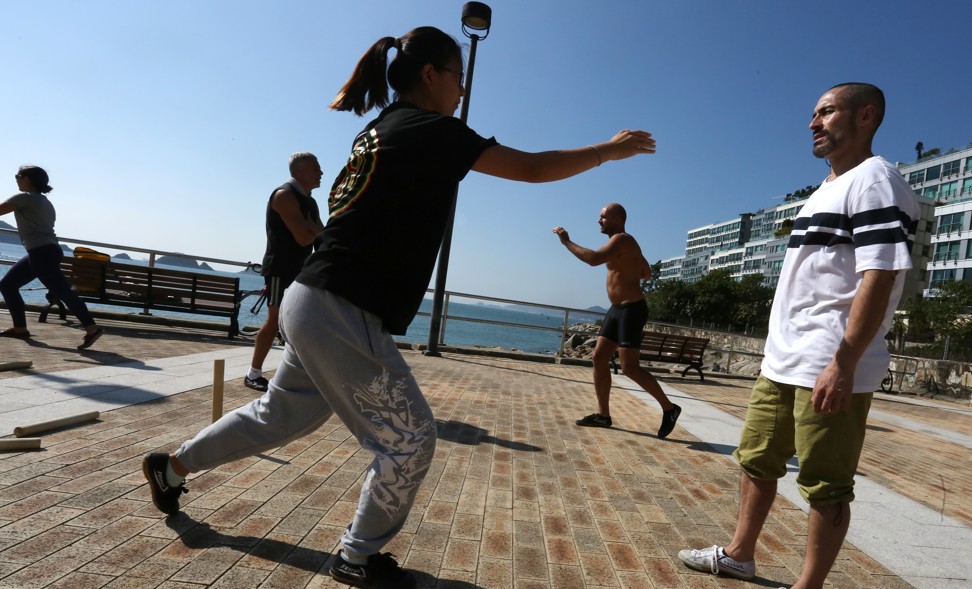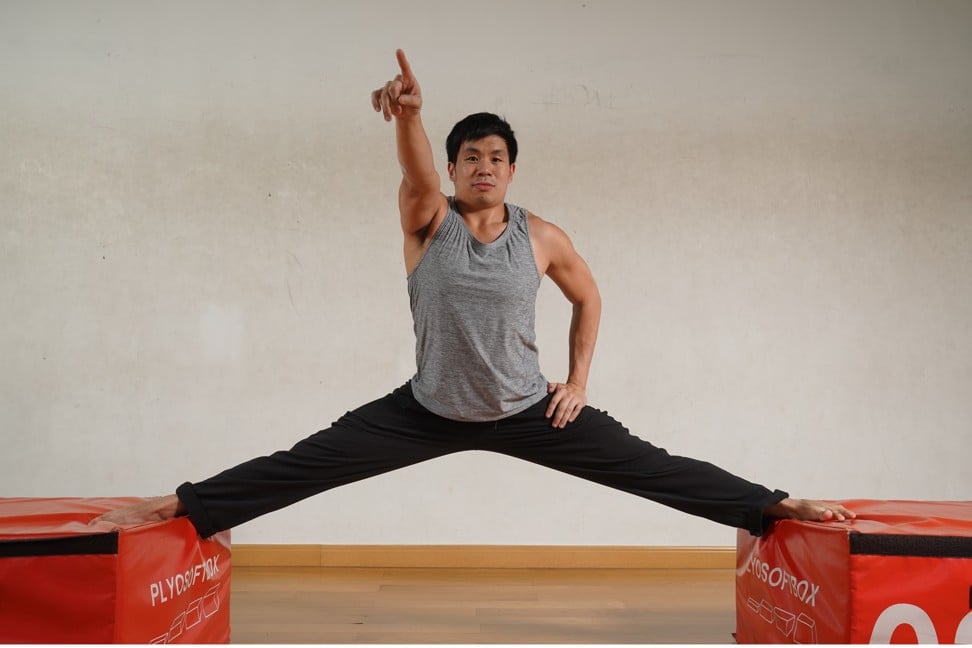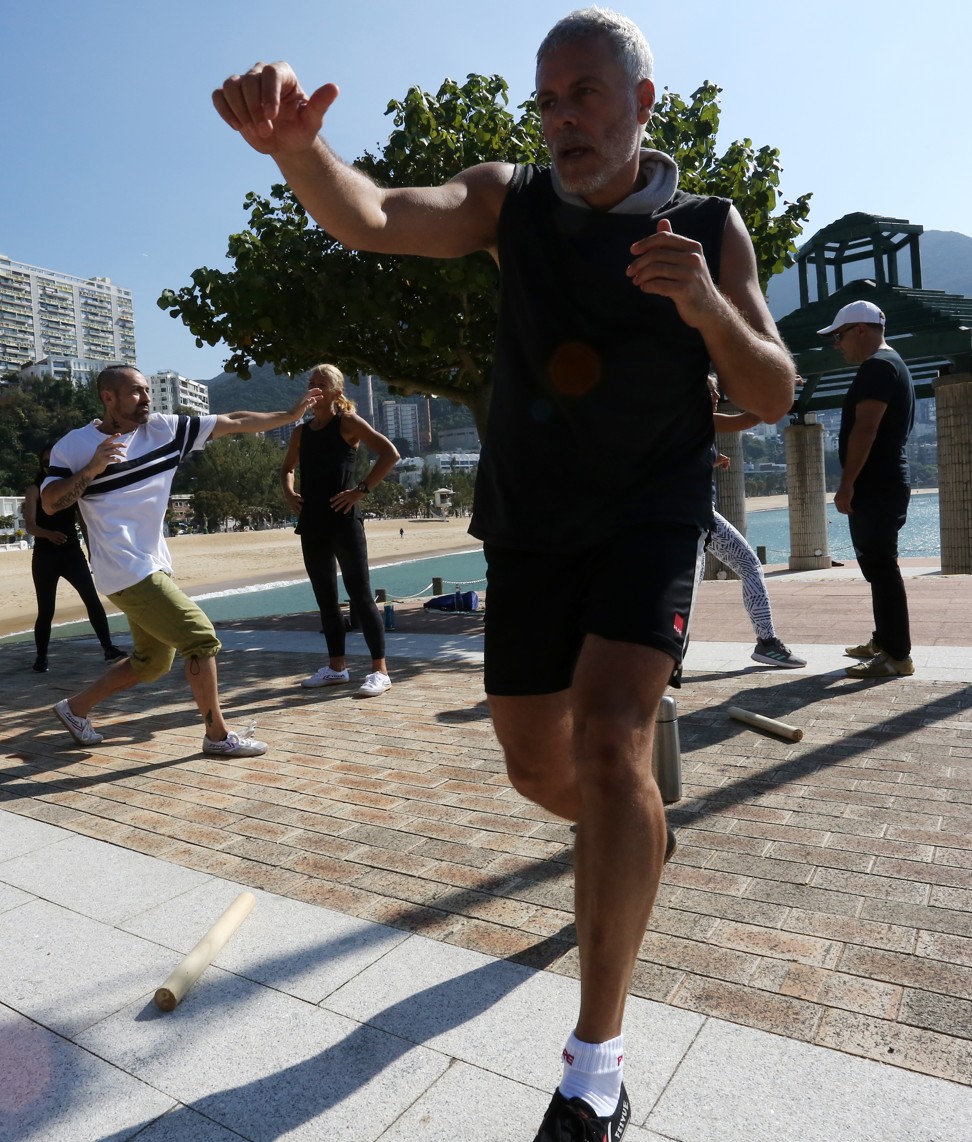
Movement culture: used by UFC legend Conor McGregor, fitness trend can help no matter how unfit you are
- Emerging fitness regime draws from virtually all the physical disciplines, and offers an unusually well-rounded training style to suit all shapes and sizes
- Its main aim is to fight people’s lack of physical activity – a trigger for heart disease, depression and other conditions

A group of people crawl on all fours, juggling tennis balls or curling their bodies as they perform spinal waves on a Hong Kong beach.
The Saturday morning group at Repulse Bay are practising movement culture, an emerging style of physical training and one to consider if you are seeking a fresh experience for the new year or wish to regain fitness in this era of pandemic sedentariness.
“We work all day on computers. Then you see people staring at phones while they’re doing sit-ups in the gym or having lunch together,” says Andres Vesga, a Hong Kong-based movement coach. “People are so detached [from] their own bodies and from each other. Movement can protect us from this environment.”
In November, a World Health Organisation study revealed that 80 per cent of adolescents are not completing at least one hour of physical activity per day. A 2018 study published in British medical journal The Lancet, and involving 1.9 million adults, found nearly a third performed less than 150 minutes of moderate physical activity, or 75 minutes of vigorous physical activity, every week.

Physical inactivity increases the risk of chronic conditions including heart disease or high blood pressure, as well as mental health problems such as anxiety or depression.
Vesga invited me to one of his two-hour weekend classes, where the no-nonsense instructor guides his students through a broad variety of exercises. After warming up, we perform hand-eye coordination drills, balance 15-inch (38cm) batons on our arms to fine-tune focus and muscle control, practise locomotion – deliberately moving on all fours – and enhance power through body weight fitness sets.
Vesga says the exercises in each class always vary, meaning students challenge themselves in new ways each time. “Everybody can benefit from having strength or a healthy spine,” says Vesga. “But it’s also about overcoming fear, trying new things, and being with others – all while your phone is away.”
How the ‘Movement movement’ took off
Movement is a training style – some say way of life – which synthesises the essence of potentially any physical discipline, from parkour to boxing. It is considered to be the brainchild of Israeli-born coach Ido Portal, who gained traction when YouTube videos of him artfully crouching, leaping and turning across the ground went viral in the early 2010s.
“[Ido] looked like Tarzan,” recalls Vesga. “He was on the street, barefoot – no fancy clothes, no speech trying to sell me his stuff.” A Colombian-born fitness instructor, Vesga moved to Hong Kong in 2009 with Pure Fitness, and previously starred in flashy workout videos for fitness firm Les Mills International.

“The fitness industry has become very fake,” says Vesga. “It’s a marketing business. It’s become about how it looks rather than [about] the content.”
His curiosity piqued by movement culture’s no-frills approach, Vesga joined a workshop in Singapore to learn from Portal in person. He became a mentee of Portal’s, an invitation-only honour extended to a few dozen students, and began teaching movement in 2015.
Although the phenomenon was popularised by Portal, not all movement practitioners identify as his followers. In 2017, fitness instructor Teddy Lo co-founded Trybe, a movement-centred gym in Hong Kong. He discovered movement culture through circus arts, and combines his expertise in aerobics, gymnastics, calisthenics and more to design his classes. Lo incorporates similar exercises to Vesga’s, such as creative floor work or spine-strengthening hanging.
“I believe that there’s no singular approach to movement,” explains Lo. “The practice itself predates the existence of the term, so everyone’s understanding may be different.”
The number of people teaching and practising movement over the last few years has grown exponentially. We work with people of different backgrounds from professional athletes [to] those stepping into the gym for the first time
A way of life for any mover
Whether you are a Portal loyalist or not, movement culture is open to “movers” of any level.
“The number of people teaching and practising movement over the last few years has grown exponentially,” says Lo. “We work with people of different backgrounds from professional athletes [to] those stepping into the gym for the first time.”
Gabriela Lara, 52, agrees that movement is for anyone, often joining her husband and two teenage daughters for Vesga’s classes.
“I’m not strong, so I never stuck with other types of fitness groups for long,” says Lara. “But with movement you can come as you are. Even the strong ones find a challenge here, because the varieties of movement never end. It’s beautiful.”

There are signs that movement, or at least its naturalistic, device-free tenet, is slowly making its way into mainstream fitness consciousness. This year, the Mandarin Oriental hotel chain redesigned its fitness centres globally to include “movement and mobility zones”. These zones leave space for free movement in gyms previously filled with equipment.
“Our goal is to create more ‘room to move’,” says Jeremy McCarthy, global director of spa and wellness at the Mandarin Oriental. “Fewer and fewer guests are using weight machines, and more are fighting over the open space which was traditionally used as a small stretching area.
“Giving more open space gives users the freedom to practise the style of movement patterns that they are accustomed to.”
How the body and mind interact
As the outdoor class comes to its close, Vesga invites all of us to sit down cross-legged, and ends the session, to my surprise, with meditation.
“What you learn from Ido is that if you want to be an expert of something, you need to know about its opposite,” says Vesga. “If you’re into movement, you have to know about stillness – they cannot be separated. Just like the mind and body.”
Sitting with our eyes closed listening to waves crashing on the shore was a far cry from air-conditioned gyms. Perhaps movement culture, with its oddly challenging yet back-to-basics simplicity, really is what we need right now.

Movement culture versus other fitness disciplines
Training style: Movement
Description: Taking the core essence of any physical discipline, drawing from potentially all styles of sport, combat or fitness.
Key objective: Improving quality of movement.
Popularised by: Ido Portal in the early 2010s.
Famous practitioners: MMA champion fighters such as UFC’s Conor McGregor and Bellator’s Michael “Venom” Page have studied under Portal, employing movement training before fights.
Training style: Mixed Martial Arts
Description: A combat sport which pulls from multiple forms of martial arts including jiu-jitsu, Muay Thai and wrestling.
Key objective: Beating an opponent in combat.
Popularised by: MMA promotion company Ultimate Fighting Championship (UFC), which was founded in 1993 and today can attract over a million paying viewers per fight.
Famous practitioners: Actor Tom Hardy took up MMA when bulking up for his role in Venom and fellow actor Chris Pratt posted Instagram videos last year of himself training with former UFC champ Rodrigo Nogeuira.
Training style: CrossFit
Description: A holistic high-intensity workout regimen of US origin, created in 2000, which involves honing 10 attributes: cardio endurance, stamina, strength, flexibility, power, speed, coordination, agility, balance and accuracy.
Key objective: Attaining maximum strength and fitness.
Popularised by: A mix of word of mouth, adoption by public services such as the Santa Monica Police Department SWAT Team in California, and the popularity of CrossFit Games, which draw competitors in the hundreds of thousands.
Famous practitioners: Actress Jessica Alba is an open CrossFitter, appearing in workout videos for media company PopSugar, while actor Channing Tatum credits CrossFit for helping develop the lean physique he is known for.